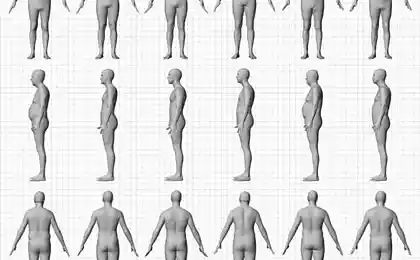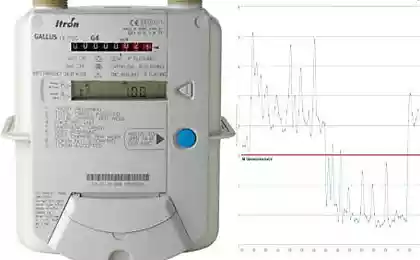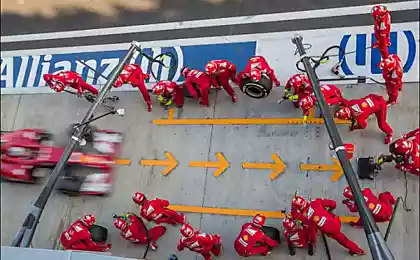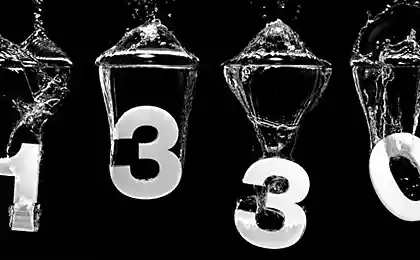739
Figures in Formula 1 (7 pics + text)
Formula 1 fans from around the world watched with admiration for the exciting fight pilots and technologies for victories and titles. Auto racing has its highest level of the game of numbers, no less fascinating.

2 kilograms
On average, it loses so much pilot during each Grand Prix, burning 600 calories. The heart beats with the rhythm of the pilot 190 beats per minute.
100 sets

100 Included Parts headphones ideal for radio command is used during the Grand Prix. Also luggage team includes 16 large computers and 26 laptops.
28 tons
28 tons - that baggage Formula 1 team here at least 3 chassis, engines, spare parts, tools, equipment boxes, etc. In general, the team packs around 10, 000 items, including about 1, 500 paper napkins with team logo.
55 meters
That's how much you want a Formula 1 car to a complete stop when braking from a speed of 200 km / h for 1, 9 seconds. Downforce is 5G, so the pilot with a weight of 75 kg "leans" on seat belts with load equal to 375 kg.
For comparison, conventional compact car class will inhibit every 4 seconds for 1 118 meters with the same speed of 200 km / h to standstill.
3300 liters
During the hot Grand Prix team and its guests consumed 3,300 liters of water and bezalkolnyh drinks. The pilot in the cockpit is necessary not sweet - the body loses through sweat 1, 5 liters of fluid.
500 meters
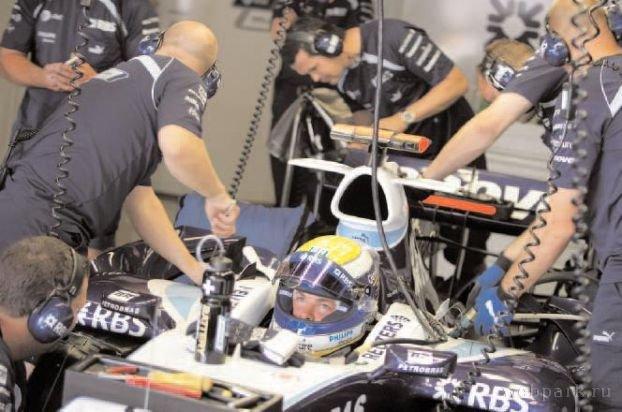
500 meters and 300 meters communication power cables laid in the garage Formula 1 team for the race.
70 people
In this part of the team involved in the Grand Prix at the extent of the weekend. During the tests, you can count up to 60 people in the state.
950 degrees

This temperature can be measured in the exhaust pipe during operation of the engine, brakes during braking heated over 1, 000 degrees. Tires much colder - up to 130 degrees, but at temperatures higher than this increases the risk of blistering rubber. The average temperature inside the cockpit - 50 degrees.
1200 liters
1200 liters of fuel burned fireballs one team for the race weekend, in addition to this figure, the expenses are written off about 70 liters of engine oil and up to 30 liters of transmission oil. Engine power 750 bhp does not suffer from lack of appetite - fuel consumption is about 70 liters per 100 km, or 0, 078 liters per unit of power. Stunning comparison - the standard car compact class will consume as much as 0, 093 liters per unit of power - 19% more than the car of Formula 1.
16, 000 kilometers

16 thousand kilometers - is the total length of fiberglass yarns highest mark T800 takes to manufacture just one hat. Approximately 12, 000 strands thick is 15 times smaller than a human hair - a pledge of safety pilot.
3, 100 times
3, 100 times drivers to shift gears during the Monaco Grand Prix. Any other costs Grand Prix pilots less severely - requires "only" 2, 600 switching.
129 hours

Requires assembly costs of the engine, which consists of 5, 000 individual parts
1, 067 laps
That's how much total distance of 5 laps, 178.87 km need to drive Formula 1 driver in the 2007 season. Championship consists of 17 races in 17 countries on 4 continents.
8, 000, 000 times
8 million times ignites the fuel mixture in the engine Formula 1 car during each Grand Prix length of 300 km.
250, 000 hours

Four million man-hours spent on a Formula 1 car from the beginning design to manufacture. 4 500 200 drawings, 000 individual parts of the year - the price of participation in the championship of Formula 1.
180 km / h
This speed is enough car, downforce to sharing it with his weight, and then, theoretically, the car can drive on the ceiling!
$ 500
Ready to create a Formula 1 team and fight for the first place? Then do not forget about the cost of each kilometer traveled by a Formula 1 car - $ 500, and also that the distance championship - 5 000 km.

2 kilograms
On average, it loses so much pilot during each Grand Prix, burning 600 calories. The heart beats with the rhythm of the pilot 190 beats per minute.
100 sets

100 Included Parts headphones ideal for radio command is used during the Grand Prix. Also luggage team includes 16 large computers and 26 laptops.
28 tons
28 tons - that baggage Formula 1 team here at least 3 chassis, engines, spare parts, tools, equipment boxes, etc. In general, the team packs around 10, 000 items, including about 1, 500 paper napkins with team logo.
55 meters
That's how much you want a Formula 1 car to a complete stop when braking from a speed of 200 km / h for 1, 9 seconds. Downforce is 5G, so the pilot with a weight of 75 kg "leans" on seat belts with load equal to 375 kg.
For comparison, conventional compact car class will inhibit every 4 seconds for 1 118 meters with the same speed of 200 km / h to standstill.
3300 liters
During the hot Grand Prix team and its guests consumed 3,300 liters of water and bezalkolnyh drinks. The pilot in the cockpit is necessary not sweet - the body loses through sweat 1, 5 liters of fluid.
500 meters

500 meters and 300 meters communication power cables laid in the garage Formula 1 team for the race.
70 people
In this part of the team involved in the Grand Prix at the extent of the weekend. During the tests, you can count up to 60 people in the state.
950 degrees

This temperature can be measured in the exhaust pipe during operation of the engine, brakes during braking heated over 1, 000 degrees. Tires much colder - up to 130 degrees, but at temperatures higher than this increases the risk of blistering rubber. The average temperature inside the cockpit - 50 degrees.
1200 liters
1200 liters of fuel burned fireballs one team for the race weekend, in addition to this figure, the expenses are written off about 70 liters of engine oil and up to 30 liters of transmission oil. Engine power 750 bhp does not suffer from lack of appetite - fuel consumption is about 70 liters per 100 km, or 0, 078 liters per unit of power. Stunning comparison - the standard car compact class will consume as much as 0, 093 liters per unit of power - 19% more than the car of Formula 1.
16, 000 kilometers

16 thousand kilometers - is the total length of fiberglass yarns highest mark T800 takes to manufacture just one hat. Approximately 12, 000 strands thick is 15 times smaller than a human hair - a pledge of safety pilot.
3, 100 times
3, 100 times drivers to shift gears during the Monaco Grand Prix. Any other costs Grand Prix pilots less severely - requires "only" 2, 600 switching.
129 hours

Requires assembly costs of the engine, which consists of 5, 000 individual parts
1, 067 laps
That's how much total distance of 5 laps, 178.87 km need to drive Formula 1 driver in the 2007 season. Championship consists of 17 races in 17 countries on 4 continents.
8, 000, 000 times
8 million times ignites the fuel mixture in the engine Formula 1 car during each Grand Prix length of 300 km.
250, 000 hours

Four million man-hours spent on a Formula 1 car from the beginning design to manufacture. 4 500 200 drawings, 000 individual parts of the year - the price of participation in the championship of Formula 1.
180 km / h
This speed is enough car, downforce to sharing it with his weight, and then, theoretically, the car can drive on the ceiling!
$ 500
Ready to create a Formula 1 team and fight for the first place? Then do not forget about the cost of each kilometer traveled by a Formula 1 car - $ 500, and also that the distance championship - 5 000 km.
Decided to help - take the lift (2 photos)
In Taronga Zoo (Sydney, Australia) was born recently dwarf Hippo.
